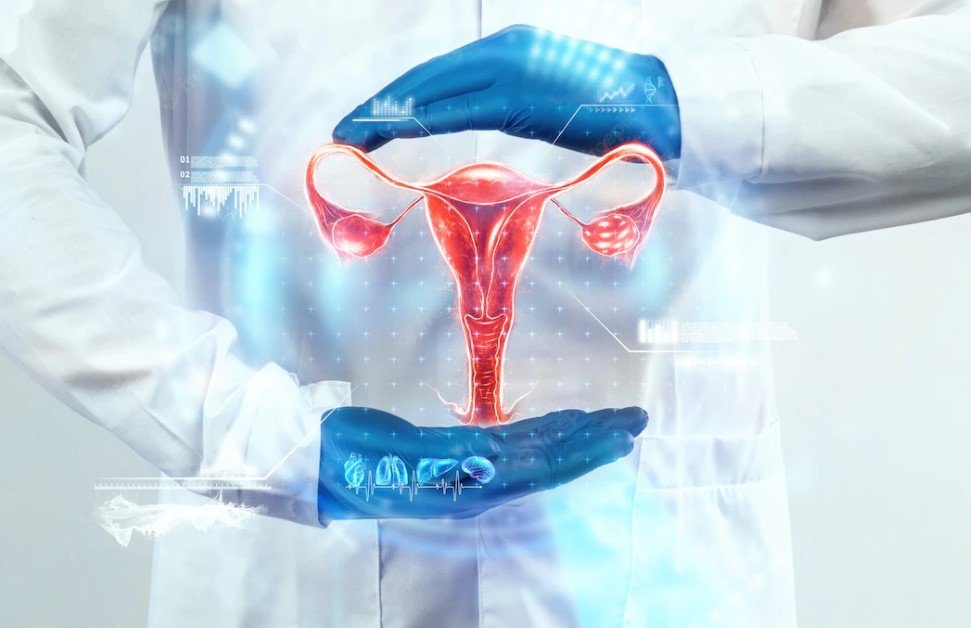
What is a hysterectomy?
Hysterectomy refers to the removal of uterine structures through various surgical approaches. A hysterectomy ends menstruation (menstrual bleeding) and reproductive function. In addition to uterine tissue, structures such as ovaries and fallopian tubes can also be removed during hysterectomy.
What are the conditions that require hysterectomy?
Hysterectomy may be considered in the presence of various conditions that may have negative consequences for uterine function and general health:
- In the presence of abnormal vaginal bleeding that cannot be controlled with other treatment methods,
- If the presence of uterine tissue, called endometriosis, in areas outside the uterus is serious,
- Pelvic organ prolapse is a condition in which the reproductive organs in women are in a different position than normal due to weakness in the supporting tissues. Uterine prolapse (uterine prolapse) refers to the downward displacement of the uterus within the vaginal canal. As a result of this condition, urinary incontinence (urinary incontinence) or bowel movement disorders can be corrected,
- If benign tumoral formations, referred to as uterine fibroids, increase in size or cause bleeding and excessive pain,
- In the presence of pelvic pain that does not respond to these treatment interventions despite the application of various treatment methods,
- For the treatment of cancer or abnormalities of the cervix or uterus,
The emergency surgical removal of uterine tissue is an action that is performed in a variety of rare circumstances. Serious injuries, severe infectious diseases or uncontrollable bleeding during childbirth are examples of cases where an emergency hysterectomy can be performed.
How is hysterectomy performed?
There are many different approaches for hysterectomy procedures. The common feature in all technical approaches is that the hysterectomy procedure is performed under anesthesia.
In abdominal hysterectomy, the surgeon aims to access the uterine tissue to be removed through the abdomen. With the help of an incision in the abdomen, the uterus is removed through the abdominal cavity. After this procedure, healing occurs by leaving a small scar in the incision areas.
One of the methods to access the uterine tissue for hysterectomy is vaginal hysterectomy. The uterus is removed through an incision on the inside of the vagina. Since the incision is not outside the body, an invisible scar is formed after the healing period.
Instead of large incisions in the abdomen, the method that allows the light source, camera and surgical instruments to be delivered into the abdomen through 3-4 small incisions is called laparoscopic hysterectomy. After reaching the abdomen, the uterus is detected and the uterine tissue is removed in small pieces.
For hysterectomy, vaginal or laparoscopic approaches are the more common techniques used because they are less invasive than abdominal surgery. Determining which technique to use may vary depending on the characteristics of the person undergoing the procedure. General health status, age and body weight are among the characteristics taken into consideration.
At the same time, there are differently named hysterectomy procedures depending on which parts of the uterine tissue will be removed with the hysterectomy procedure or which organs other than the uterus will be involved in the removal process:
- Partial hysterectomy refers to a hysterectomy procedure in which the body of the uterus is removed but the neck, fallopian tubes and ovaries are left in place.
- Total hysterectomy is the complete removal of the uterus without interfering with other reproductive organs.
- Radical hysterectomy is a term that refers to the complete removal of the uterus, as well as the removal of the vaginal tissue, supporting tissues and sometimes the fallopian tube, ovaries and lymph nodes in the area.
Hysterectomy is considered major surgery and the duration of this procedure can vary between 1-3 hours. Depending on the surgical method used, the length of hospitalization and recovery period may also vary. It may take 3 to 6 weeks to return to daily activities after surgery.
Avoiding actions such as pushing and pulling objects, using vacuum cleaners, heavy lifting, bending and sexual activity for a while after discharge and returning home are among the measures that can be taken to prevent negative developments during the recovery period.
What are the benefits of hysterectomy?
Hysterectomy is particularly important in patients with uterine or ovarian cancer because it contributes to survival. Complaints due to the large number of fibroids in the uterus may also disappear after hysterectomy surgery.
What are the risks of hysterectomy?
As with all surgical interventions, there may be some risks associated with hysterectomy. One of the risks of hysterectomy, which is one of the relatively safe surgical procedures, is an unwanted interaction with anesthesia. The bladder, intestines and blood vessels are the most commonly affected tissues during hysterectomy. For this reason, pain, constipation and problems with urination may occur in the first 5 days after surgery. Care should be taken as a second surgical intervention may be required to correct these rare conditions.
The abnormal adhesions between the tissues cut during the abdominal hysterectomy procedure are called adhesions. The development of adhesions after hysterectomy surgery can lead to pain and problems with the digestive system.
It is not possible for a person who has had a hysterectomy to become pregnant for the rest of her life. Menstrual bleeding may continue after a hysterectomy in which the ovaries and cervix are not removed. Removal of the ovaries during hysterectomy surgery means that the person has now entered menopause. Therefore, symptoms of this period such as hot flushes, mood changes and vaginal dryness may occur in the postoperative period.
Sexual life can be affected positively or negatively after hysterectomy surgery, depending on what the problem was before the procedure. If the basis of sexual activity problems is the feeling of pain during intercourse and this complaint is alleviated after surgery, the sexual life of the person improves. In some women, sexual life may be negatively affected due to a decrease in the level of pleasure experienced during sexual activity after hysterectomy.


Contact
We are at your service 24/7
Error: Contact form not found.
Patient Satisfaction
Beautiful thoughts from all of you
If you're looking for car insurance, we will help you to find the You bring emendous value to company. We have generated more leads in the last

Farhan Smith Health Mentor
If you're looking for car insurance, we will help you to find the You bring emendous value to company. We have generated more leads in the last

Elwin Dawson Medical Specialist
If you're looking for car insurance, we will help you to find the You bring emendous value to company. We have generated more leads in the last

Poral Dawson Home Nurse
If you're looking for car insurance, we will help you to find the You bring emendous value to company. We have generated more leads in the last


